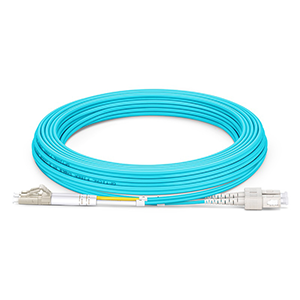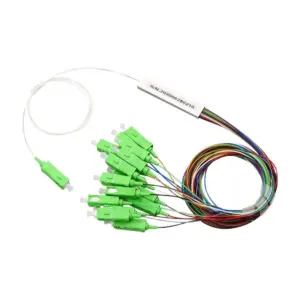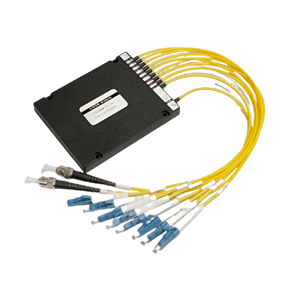Hello everyone, today I will explain the key differences and applications of single-mode and multi-mode fiber optic cables. Single-mode fiber and multi-mode fiber optic cables play different roles in fiber optic communications. Understanding their definitions, characteristics, and application scenarios can help you make a more informed choice. At the same time, I will also introduce the basic knowledge of SFP (Small Form-factor Pluggable) transceivers, especially the difference between single-mode and multi-mode SFP.
Have you ever considered using multi-mode fiber optic cables to connect single-mode SFP? We will explore its feasibility in depth and analyze possible problems and solutions. With this information, you will be able to better choose the right fiber optic cable and SFP transceiver to improve the performance of your communication system. If you need more professional fiber optic solutions, please contact me. We provide high-quality products and professional services to help you achieve the best network connection.
What are single-mode and multi-mode fiber optic cables
Single-mode fiber optic cables have a smaller core diameter (about 8-10 microns) and are used for long-distance, high-bandwidth transmission, suitable for remote communications. Multimode fiber optic cable has a larger core diameter (about 50-62.5 microns) and is used for short-distance transmission, such as data centers and local networks. Single-mode fiber generally supports higher transmission rates and longer distances, while multimode fiber is suitable for short-distance high data rate applications.
Single-mode and multimode fiber optic cables are two different types of fiber optic transmission media. They have the following differences in working principles and application scenarios:
1. Definition and characteristics:
- Single-mode fiber:
- The core diameter of single-mode fiber is very small, allowing only a single light wave to be transmitted.
- The transmission distance is long, generally up to tens of kilometers, but the cost is high.
- Multimode fiber:
- The core diameter of multimode fiber is larger, allowing multiple light waves to be transmitted simultaneously.
- The transmission distance is short, generally within a few kilometers, but the cost is relatively low.
2. Application scenarios:
- Single-mode fiber:
- Mainly used in long-distance transmission scenarios such as backbone networks and metropolitan area networks.
- Suitable for applications with high requirements for transmission quality and stability.
- Multimode fiber:
- Mainly used in short-distance transmission scenarios such as local area networks and campus networks.
- Suitable for cost-sensitive applications with short transmission distances.
In short, single-mode and multi-mode fiber cables play different roles in network applications due to their differences in working principles and characteristics. Reasonable selection of fiber type helps build a high-performance and reliable enterprise network infrastructure.
Introduction to SFP transceivers
SFP (Small Form-factor Pluggable) transceiver is a hot-swappable network interface module for fiber or copper cable connections. It provides flexible network expansion options and supports multiple data rates and interface types, such as fiber (single mode or multimode) and Ethernet. SFP modules allow network devices to be easily replaced and upgraded as needed, improving the adaptability and scalability of the network.
1. Types and features of SFP transceivers:
- SFP transceiver is a pluggable fiber optic transceiver module.
- Supports transmission rates ranging from 1Gbps to 10Gbps.
- Provides flexible fiber optic connection interface, suitable for different network devices.
2. The difference between single-mode SFP and multi-mode SFP:
- Single-mode SFP:
- Use single-mode optical fiber, suitable for long-distance transmission.
- Typical transmission distance can reach tens of kilometers.
- Higher cost.
- Multi-mode SFP:
- Use multi-mode optical fiber, suitable for short-distance transmission.
- Typical transmission distance is several kilometers or less.
- Low cost.
According to different network application requirements, reasonable selection of single-mode or multi-mode SFP transceivers will help build an efficient and economical enterprise network infrastructure.
Feasibility of using multimode fiber cable to connect single-mode SFP
Using multimode fiber cable to connect single-mode SFP is usually not feasible. Single-mode SFP is designed for long-distance single-mode fiber transmission, and multimode fiber cable and SFP are not compatible. Multimode fiber has a larger core diameter and is suitable for short-distance multimode SFP. In order to ensure network performance and signal quality, the fiber type that matches the SFP module should be used.
1. Principle analysis: fiber core diameter and SFP optical port matching
- Single-mode SFP and multimode fiber:
- The optical port size of the single-mode SFP transceiver matches the core diameter of the single-mode fiber.
- But if it is connected to a multimode fiber, problems will occur due to the mismatch of the optical port size.
- Multimode SFP and single-mode fiber:
- The optical port size of the multimode SFP transceiver does not match the core diameter of the single-mode fiber.
- Signal transmission problems may also occur in this case.
2. Possible problems: signal attenuation, insufficient optical power, etc.
- Signal attenuation:
- Due to the mismatch of the optical port size, the signal will be severely attenuated in the optical fiber.
- Insufficient optical power:
- Severely attenuated signals may have insufficient power when they reach the receiving end and cannot be demodulated normally.
Therefore, it is not feasible to use multimode fiber optic cables to connect single-mode SFP transceivers. In this case, the signal transmission quality will be greatly reduced or even fail to work properly. In order to ensure the reliability of fiber optic connections between network devices, you should choose a fiber type that matches the size of the SFP optical port, that is, single-mode SFP with single-mode fiber, and multi-mode SFP with multi-mode fiber. Only in this way can the stable transmission of optical signals be guaranteed.
When can multimode fiber optic cables be used to connect single-mode SFPs?
In special cases, it may be feasible to use multimode fiber optic cables to connect single-mode SFPs, such as using fiber converters or special fiber optic adapters that can convert optical signals from single-mode to multi-mode for transmission. However, this solution may cause signal attenuation and performance loss.
In general, it is recommended to use a fiber type that is compatible with the SFP module to ensure optimal performance and stability. Although it is generally not recommended to use multimode fiber cables to connect single-mode SFPs, this practice may be feasible in some special cases:
1. Short fiber transmission distance
- When the fiber transmission distance between network devices is short (generally less than 2 kilometers),
- Due to the small fiber loss, even if there is a mismatch in the optical port size,
- it may not cause serious signal attenuation problems.
2. Large optical power margin
- If the single-mode SFP has a high transmit power and a large optical power margin,
- Even if there is a certain degree of attenuation after connecting to multimode fiber,
- The receiving end may still be able to detect sufficient optical signals.
In the above two cases, using multimode fiber to connect single-mode SFP may not cause serious transmission problems.
But in general, this approach is not the best choice. In order to ensure stable and reliable fiber connections between network devices, it is best to choose single-mode or multi-mode fiber cables that match the size of the SFP optical port. Only in this way can the best transmission performance be achieved.
How to correctly select fiber optic cables and SFP transceivers
When correctly selecting fiber optic cables and SFP transceivers, the fiber type (single-mode or multi-mode), wavelength, and transmission distance should be matched. Make sure that the specifications of the SFP transceiver match the fiber optic cable, such as single-mode SFP should be used with single-mode fiber, and multi-mode SFP should be used with multi-mode fiber.
At the same time, choose the appropriate wavelength (such as 850nm, 1310nm) and rate (such as 1G, 10G) to meet network requirements and ensure optimal performance. Correctly selecting fiber optic cables and SFP transceivers is essential to building a high-performance, reliable network. The following aspects need to be considered:
1. Choose the appropriate single-mode or multi-mode optical fiber according to the transmission distance:
- For long-distance transmission (usually greater than 2 kilometers):
- Single-mode optical fiber should be selected, and its transmission distance can reach tens of kilometers.
- For short-distance transmission (usually less than 2 kilometers):
- Multi-mode optical fiber can be selected, which has a lower cost.
2. Choose a single-mode or multi-mode SFP transceiver that matches the optical fiber:
- If single-mode optical fiber is used:
- Single-mode SFP transceiver should be selected to ensure that the optical port size matches.
- If using multimode fiber:
- Multimode SFP transceivers should be selected to ensure that the optical port size matches.
In addition, when selecting SFP transceivers, you also need to pay attention to the following points:
- Ensure that the power consumption of the SFP transceiver is compatible with the device interface.
- Original SFP transceivers certified by Cisco should be given priority.
By reasonably selecting the type of fiber optic cable and the matching SFP transceiver, you can ensure that the fiber optic connection between network devices is stable and reliable, and improve the performance and availability of the entire network.
Summary
Through today’s discussion, I hope you have a deeper understanding of single-mode and multi-mode fiber optic cables. Whether it is choosing the right fiber optic cable or purchasing an SFP transceiver, the right choice is crucial. We have accumulated rich experience in providing fiber optic products and solutions, and can tailor the most suitable solution for you.
If you encounter any fiber optic communication problems or need more information about fiber optic products, please feel free to contact me. I will provide you with professional advice and high-quality services to ensure that your network system is stable and efficient.
Multimode Cable vs. Singlemode SFP FAQ
No, you should not use multimode fiber cables with a single-mode SFP module. Single-mode SFP modules are designed to work with single-mode fiber cables, which have a smaller core size and are optimized for long-distance transmission.
Connecting a multimode fiber cable to a single-mode SFP module may result in poor performance, signal loss, or no connection at all. Single-mode SFP modules are not compatible with multimode fibers.
Single-mode SFP modules are designed to operate with a narrow beam of light that travels through single-mode fiber, which has a small core diameter. Multimode fiber cables, with their larger core diameter, are not suitable for this type of light transmission.
No, multimode SFP modules are not compatible with single-mode fiber cables. Each type of SFP module is designed to match the specifications of the corresponding fiber type.
Single-mode fiber cables have a smaller core diameter (typically 8-10 microns) and are used for long-distance communication. Multimode fiber cables have a larger core diameter (typically 50 or 62.5 microns) and are used for shorter distances.
Check the part number on the SFP module or refer to the module’s datasheet. Single-mode SFP modules often have part numbers that include “SM” or “LR” (long range), while multimode modules include “MM” or “SR” (short range).
No, there are no reliable adapters or converters that can convert multimode fibers to single-mode fibers. The optical properties and core sizes are inherently different and require appropriate matching components.
Mismatching SFP modules and fiber cables can lead to signal degradation, increased bit errors, reduced network performance, and connection failures, as the optical signals are not transmitted or received correctly.
Match the SFP module’s specifications with your fiber cable type. Use single-mode SFPs with single-mode fiber and multimode SFPs with multimode fiber. Verify the wavelength and distance requirements as well.
If your network is based on multimode fiber, you should use multimode SFP modules. Single-mode SFP modules are generally intended for environments where long-distance communication is required, and using them in a multimode setup is not advisable.




